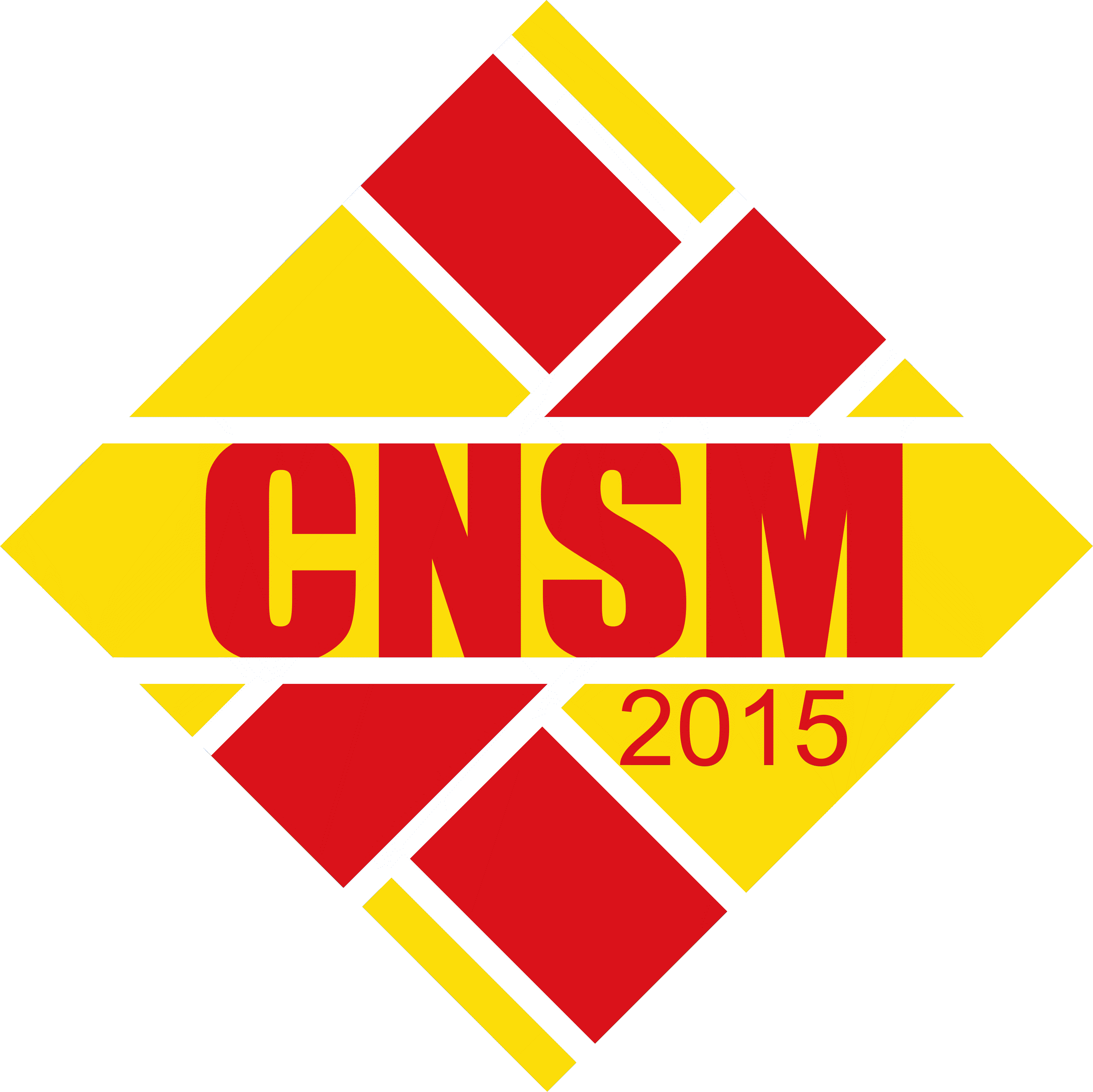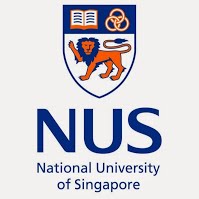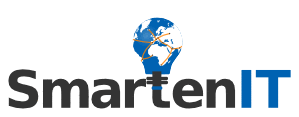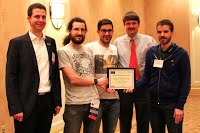News
SmartenIT Conluded Very Successfully
SmartenIT concluded very successfully after its three year of operation
with the last and closing annual review on January 29, 2016 hosted by
AGH. This third time in a row excellent review result indicated not only
that all project objectives, SMART ones and technical ones, have been
met in full, but that the scientific and dissemination success are
excellent and innovative. Therefore, the full fledged set of publicly
available results in terms of publications and deliverables are
available on-line here. |
SmartenIT system v3.2 released!
The WP3 engineering team announces that the version 3.2 of the SmartenIT prototype has been successfully released. Version 3.2 implements the final version of SmartenIT software, including all the functionalities of DTM and RB-HORST mechanisms. Version 3.2 has been released as open-source to the SmartenIT Github repository, with Apache License Version 2.0, and is available at: https://github.com/smartenit-eu/smartenit. |
SmartenIT White Papers
SmartenIT results have been summarized in two separate White Papers, which outline and discuss the major findings of SmartenIT from an operator-focus view (Traffic Distribution over Time and Space - An Operator Focused Approach in Inter Cloud Scenarios) and from an end-user-focused view (From the Cloud to the Edge - QoE, Social Awareness, and Energy Efficiency in User-owned Nano Data Centers). |
Tussle Analysis presented at CSCN'15
From October 28 to October 30, 2015 the 2015 IEEE Conference on Standardsfor Communications & Networking took place in Tokyo,
Japan. The conference saw numerous presentations and keynotes on mobile
communications technologies.
Although the
conference seemed rather focused on lower-layer communications technology, UZH
presented a well-received talk on tussle analysis right after the opening
keynotes. The presented paper's abstract can be found below. The presentation highlighted the need for methodologies for assessing
the socio-economic awareness of Internet technology and standards. Accordingly,
the tussle analysis was introduced. The presentation wrapped up UZH’s
standardization activities within ITU-T that began in 2011 and led to the
publication of Y.3013, which standardized the Tussle Analysis. Tussle Analysis’
focus on the socio-economic aware shaping of the future Internet, was
particularly relevant due to the conference’s focus on future communications
technology. For example, 5G was a major topic at this conference. Abstract The Internet enables the interaction of stakeholders of virtually all commercial, industrial, and private sectors. Thereby, innumerable conflicting socio-economic interests collide through the Internet. Since self-interested stakeholders will try enforcing their interests through technological, economical, or judicial means, the Internet technology and related standards must not only be focused on technical engineering goals, but also need to ensure a fair playing field for all stakeholders. This ne¬cessity to consider socio-economic factors, when designing technology and standards, is slowly recognized by academia and standardization bodies and highlighted in this paper. The Tussle Analysis is presented as the first tool for assessing such a socio-economic awareness of Internet technology and related standards. The Tussle Analysis was standardized in Study Group (SG) 13 of the ITU-T and published as Recommendation Y.3013 in 2014. Thus, methods to implement the Tussle Analysis’ three steps are presented and discussed throughout the paper. |
Book Chapter accepted for Internet-of-Things Book
The book chapter "TinyTO: Two-way Authentication for Constrained Devices in the Internet-of-Things" was accepted for publication in the book Internet-of-Things published by IGI and edited by R. Buyya and A. V. Dastjerdi. The primary purpose of this book is to capture the state-of-the-art in
Internet of Things, its applications, architectures, and technologies.
The book also aims to identify potential research directions and
technologies that will facilitate insight generation in various domains
from science, industry, business, and consumer applications. We expect
the book to serve as a reference for larger audience such as systems
architects, practitioners, developers, new researchers and graduate
level students.
[more] Book Chapter Abstract:Wireless Sensor Networks (WSNs) are expected to play a fundamental role in the future Internet-of-Things (IoT), with millions of embedded devices actively exchanging confidential information (e.g., IDs or addresses) with each other in a multi-hop manner. Ensuring secure end-to-end communication channels will be crucial to the success of innovative IoT applications, because they are essential to avoid attacks and exposure of information. End-to-end security solutions, like IPsec or DTLS, do not scale well on WSN devices due to limited resources (e.g., memory, computational capacity). In this chapter TinyTO – an optimized two-way authentication solution for tiny devices – is presented closing the gap between WSN design and end-to-end secured communication TinyTO provides confidentiality and integrity using two-way authentication within a fast and secure handshake. TinyTO works with public-key cryptography and uses Elliptic Curve Cryptography (ECC) for message encryption and authentication. ECC lowers resource consumption and, thus, suits WSN devices with 10 kByte of RAM and 100 kByte of ROM. TinyTO does not need a network-wide shared secret, it is application-independent, and it supports in-network aggregation. |
Best Demo Award LCN 2015
At the 40th Anniversary of the IEEE Conference on Local Computer
Nenwtorks (LCN 2015) SmartenIT had been awarded the Best Demo Award for
the demonstration entitled "WiFi Offloading and Socially Aware Prefetching on Augmented Home Routers". This award is based on audience
voting, not performed by a jury, and has seen approximately 50% of all votes cast for total 9 demonstrations under presentation. Further information can be found in the extended abstract that is available under the following link: http://www.ieeelcn.org/lcn40demos/Petropoulos.pdfThis demonstration showed the RB-HORST prototype running live on real hardware. RB-HORST offers WiFi offloading, video caching, and video prefetching based on social and overlay network predictions. RB-HORST is intended to run on home gateways/routers which are represented in the demo as low power computers. The demo will show the functionality of RB-HORST and how users can interact with the system. George Petropoulos, Andri Lareida, Sergios Soursos, Michael Seufert, Valentin Burger, Burkhard Stiller: WiFi Offloading and Socially Aware Prefetching on Augmented Home Routers; Demonstration and Extended Abstract, 40th IEEE Conference on Local Computer Networks (LCN 2015), Clearwater Beach, Florida, U.S.A., October 26-29, 2015. (pdf) |
Paper accepted at CNSM
The paper "Impact of Intermediate Layer on Quality of Experience of HTTP Adaptive Streaming"
by Michael Seufert, Tobias Hoßfeld, Christian Sieber was accepted for publication at the 11th International Conference on Network and Service Management (CNSM) from November 9-13, 2015 in Barcelona, Spain. Abstract: HTTP Adaptive Streaming (HAS) adapts the video quality to the current network condition by switching between different quality layers. As HAS was shown to perform better than classical video streaming, it is becoming increasingly popular. Recent research showed that quality switch amplitude and time on layer have an impact on the Quality of Experience (QoE) of HAS. However, those studies focused only on adaptation between two layers so far. This work extends these findings by taking adaptation between three layers into account. Thereby, especially the impact of an intermediate layer on user perceived quality is investigated. Crowdsourcing experiments were conducted in order to collect subjective ratings for adaptation between three layers. The results indicate that the quality of each layer and the time on each layer are important QoE parameters. This encourages the usage of temporal pooling approaches for QoE prediction and QoE-aware traffic management. Therefore, mean pooling of per-frame metrics will be applied and its performance will be validated with the subjective crowdsourcing results. |
SmartenIT work presented at the kick-off meeting of the 5GEx (5G Exchange) project of 5G-PPP
On October 5-7, 2015 Manos Dramitinos and George D. Stamoulis participated in the Kick-off meeting of project 5GEx in Budapest, where they presented SmartenIT work, and particularly the Cloud Federation model and the Inter-Cloud Communication Traffic Management mechanism for possible exploitation of them by project 5GEx. These SmartenIT outcomes raised significant interest, and will be considered for being adopted by project 5GEx, with proper adaptations that we preliminarily discussed and will be further studies. |
SmartenIT work presented in Singapure University of Technology and Design (SUTD) and National University of Singapure (NUS)
 On September 23, 2015, G. Stamoulis gave an invited “Distinguished Seminar” in the Engineering Systems and Design (ESD) Department of SUTD. The title of the talk was "Use of Incentives' Mechanisms for Managing Internet Traffic and Cloud Resources". The talk was hosted by Prof. Costas Courcoubetis, and comprised mainly SmartenIT work, and particularly the presentation of the Cloud Federation model and the Inter-Cloud Communication Traffic Management mechanism. The abstract of this talk can be found below: “Economic mechanisms (including pricing, SLAs and auctions), address the incentives of users and service providers, each of whom responds according to his own best interest. Thus, when appropriately designed, economic mechanisms are a powerful distributed tool for the efficient allocation, management, and sharing of network resources (bandwidth, spectrum), cloud resources, digital goods (content and sensor data), and even energy goods (e.g. NegaWatts) in smart grids. In the introduction of this talk, I will present a brief overview of the relevant research carried out in the Network Economics and Services (NES) Group of AUEB. In the second part of this talk, I will consider the problem of the formation of an economically sustainable federation of resources by Cloud Service Providers. I will introduce a relevant queueing model that can be employed to derive the optimal federation policy that maximizes the total profit (revenue minus cost) of CSPs while also taking into account the incentives of individual CSPs. I will also present some results on the properties of the optimal policy. In the third part of this talk, I will briefly present the Inter-Cloud Communication Traffic Management mechanism, which performs rate control over the ISP transit link(s) aiming to attain a target reduction of transit cost. Both of the above works are being carried out in the context of EU-funded project SmartenIT.” On September 25, 2015 one more talk by G. Stamoulis followed to the
Department of Computer Science of NUS. The talk was hosted by Prof. Richard T.B. Ma and focused again on the Cloud
Federation model and the Inter-Cloud Communication Traffic Management mechanism
of SmartenIT. The talk was titled “"Use of Incentives' Mechanisms for
Managing Internet and Cloud Resources, and Energy Goods". |
Paper on the Tussle Analysis accepted at CSCN'15
The paper "Designing Future Networks: The Investigation of Socio-economic Awareness by the Tussle Analysis” by Patrick Poullie, Corinna Schmitt, Burkhard Stiller has been accepted for publication at the 2015 IEEE Conference on Standards for Communications & Networking (CSCN’15) Conference in Tokyo, Japan on October 28, 2015. The paper presents the Tussle Analysis, which is standardized in ITU-T Recommendation Y.3013 “Socio-economic Assessment of Future Networks by Tussle Analysis”. The driving force behind the development of this recommendation was UZH. The Tussle Analysis is the first tool to develop Internet technology and standards to account for socio-economic factors. Abstract The Internet enables the interaction of stakeholders of virtually all commercial, industrial, and private sectors. Thereby, innumerable conflicting socio-economic interests collide through the Internet. Since self-interested stakeholders will try enforcing their interests through technological, economical, or judicial means, the Internet technology and related standards must not only be focused on technical engineering goals, but also need to ensure a fair playing field for all stakeholders. This necessity to consider socio-economic factors, when designing technology and standards, is slowly recognized by academia and standardization bodies and highlighted in this paper. The Tussle Analysis is presented as the first tool for assessing such a socioeconomic awareness of Internet technology and related standards. The Tussle Analysis was standardized in Study Group (SG) 13 of the ITU-T and published as Recommendation Y.3013 in 2014. Thus, methods to implement the Tussle Analysis’ three steps are presented and discussed throughout the paper. |
1-10 of 158








